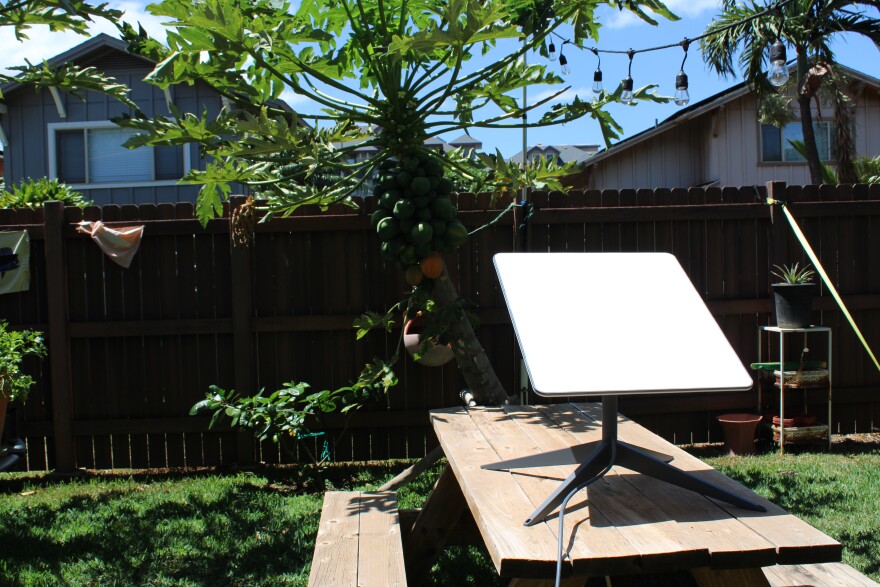Even weeks after the West Maui wildfires, internet connectivity has been spotty or completely down.
Michael Shiffler, CEO of the nonprofit Red Lightning, has been installing Starlink internet dishes throughout the area.
Founded in 2010, the group’s done disaster relief in Puerto Rico after Hurricane Maria, and across the world in places like Haiti and Turkey after earthquakes. But when he’s not traveling, Shiffler is based in Kīhei.
"I was here the night of fire. We had fires just up the hill, we could see them. We got the evacuation order," he said.
When he woke up in the morning, he began to see the gravity of the situation in Lāhainā. As reports came in, he went into disaster relief mode, trying to identify the needs of the now struggling community.
"We learned there was probably 10,000-20,000 people easily just in West Lāhainā who weren't directly affected by the fire — they didn't lose their homes — but they had been cut off from electricity, water, communication and they weren't leaving their homes," Shiffler said. "That was we saw as another disaster on top of those who perished, those who lost their homes, and those who were cut off."

On the team is sister-in-law, Camie Shiffler, who is coordinating the installs and working as the operation’s manager on top of her full-time job. She estimates she’s getting 20 calls a day from people needing help. Camie grew up in Lāhainā, but lives in Kīhei now. Many of her family lost their homes during the 2018 fires.
These local connections have helped in a time when communication limits coordination.
"We call it like cold calls, we literally just go to their address, and then we just try to find someone on the property," Camie said, estimating that 99.9% of the time people are excited. "Some I don't think understand what a Starlink is."
There are two types of Starlinks: smaller versions for residential properties and larger ones for high performance, like businesses or parks. The difference is how many people they can service. The Starlink comes with a dish and Wi-Fi router that Red Lightning installs.
The weather-resistant dish needs to be pointed at the sky and moves around throughout the day to connect to SpaceX satellites. These are donations from the community for the next two months. Subscription costs could run around $250 monthly.
"If we get more funding, we could extend it," Michael said.
According to Michael, the team has installed more than 100 connections as of Thursday, expanding their reach to thousands.
But beyond that, the team has embedded at Nāpili Noho, a community hub at Nāpili Park, helping with inventory and operations.
One member is Olga Bradley, who traveled from Florida. She said the site is "always morphing into something different" with various organizations and nonprofits setting up daily.
"We get a lot of donations from all over which is incredible, and we have a lot of folks coming in that need the help. They're coming in and getting the food, water, clothing, all the assistance."






